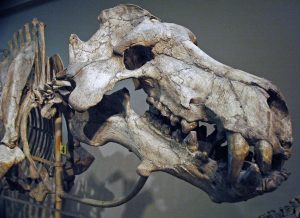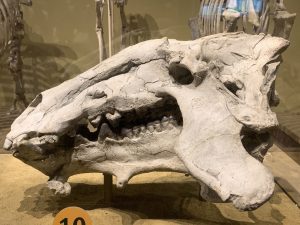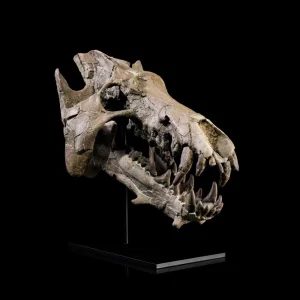Dinosaurs often steal the spotlight when it comes to prehistoric creatures, but the world was home to various terrifying beings, and among them were the infamous “hell pigs.” The term “hell pigs” is colloquially used for several species belonging to the scientific family Entelodontidae.

Despite their nickname, these creatures were not true pigs but shared a pig-like appearance. Recent research even suggests that hell pigs might be more closely related to hippos and cetaceans than to true pigs.
The entelodonts, part of the Entelodontidae family, are believed to have lived between 38 million and 19 million years ago, and fossil evidence indicates their presence across the Northern Hemisphere. Although the approximate timeline of their extinction is known, the reasons behind it remain a mystery.

Hell pigs had distinctive features, notably a large skull with a long facial part, especially in the genus Daedon, whose skulls were around 90 centimeters (35 inches) long.
They also had bony outgrowths from their lower jaws, large incisors, and canines similar to those seen in modern carnivores. Some hell pigs, like Daedon, were enormous, estimated to weigh around 900 kilograms (1,984 pounds), making them comparable to sizable brown bears.

Despite their intimidating appearance, recent research challenges the notion that entelodonts were ruthless carnivores. Studies, particularly on the microwear patterns of Entelodon magnus teeth, suggest an omnivorous diet akin to that of wild boars.
This diet included roots, fruit, and possibly scavenged meat. While they may not have been strict carnivores, evidence of healed bite marks on entelodont skulls indicates that they engaged in combat, possibly over territory or food.

In essence, while hell pigs might not have been as hellish as their name suggests, they were undoubtedly intriguing and formidable creatures in the prehistoric world.





